
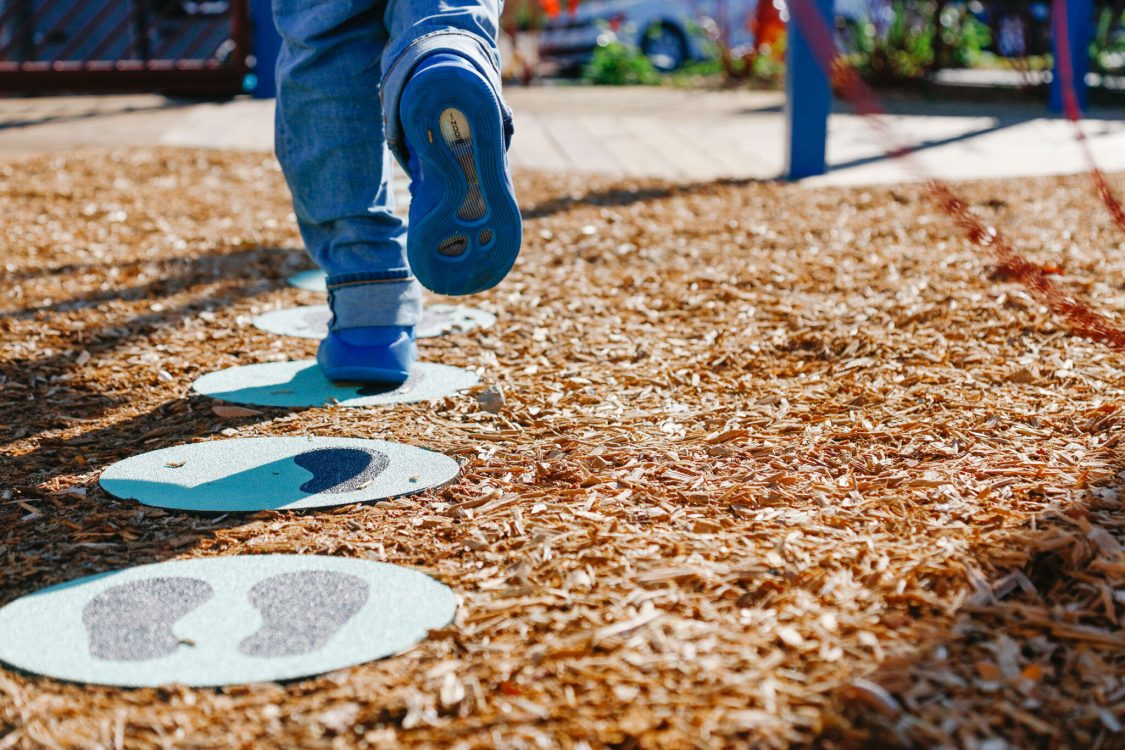
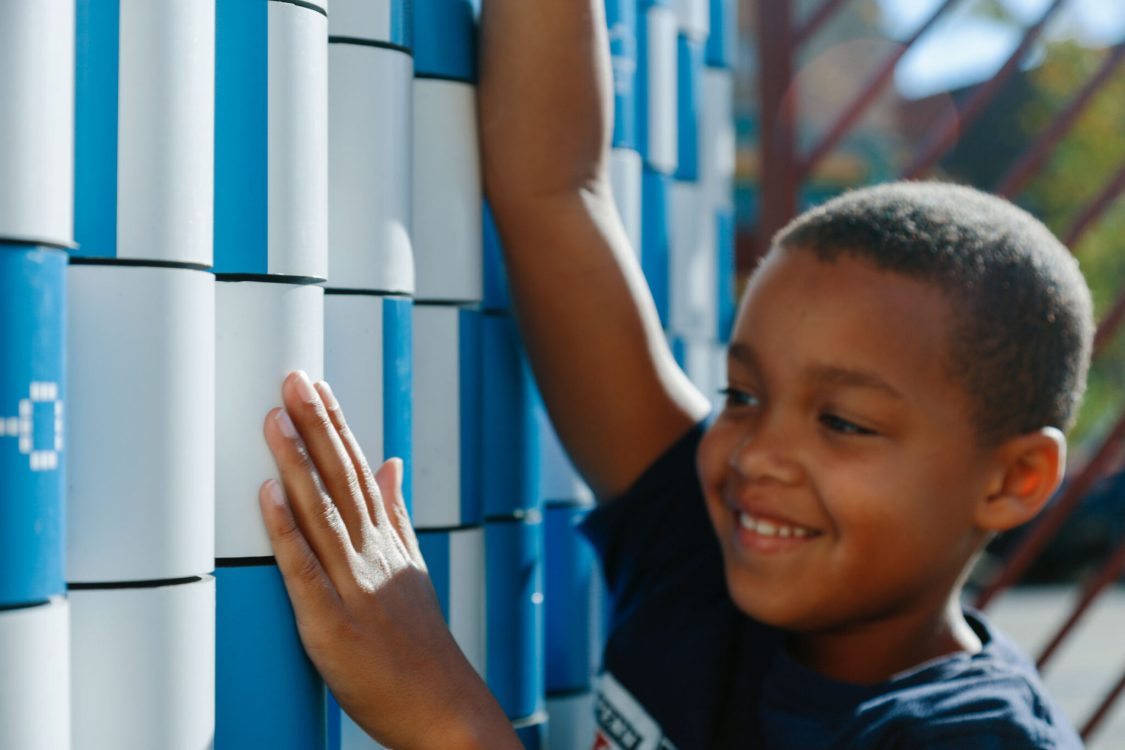
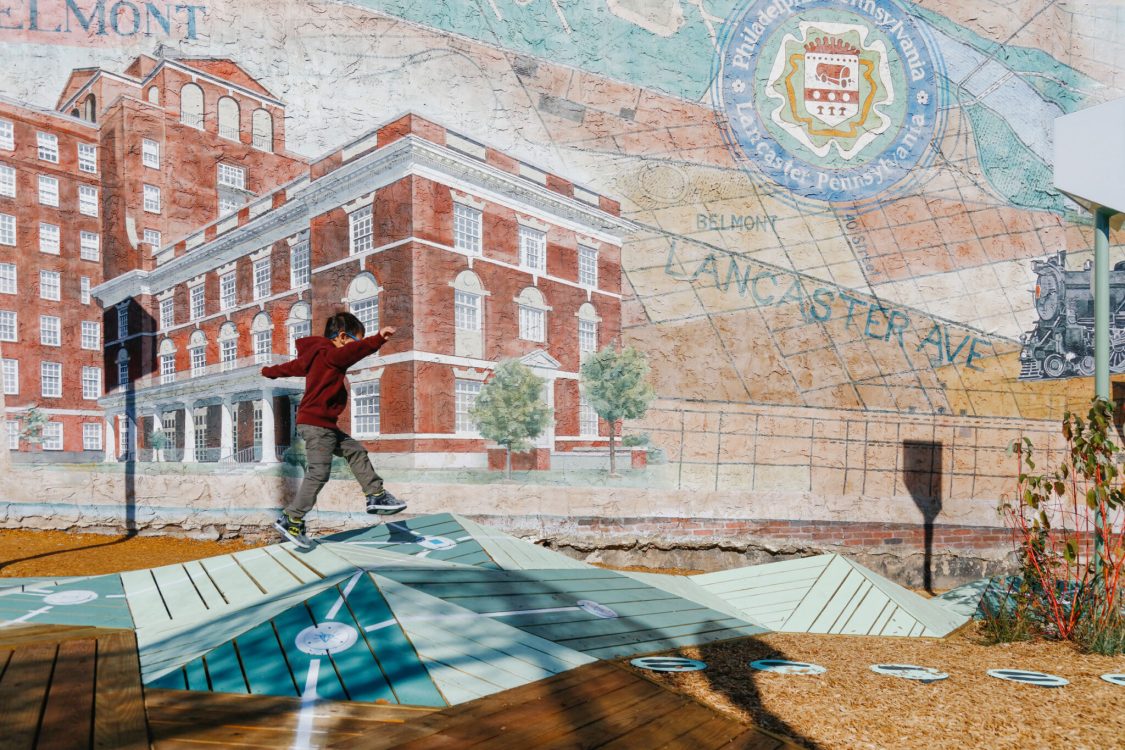
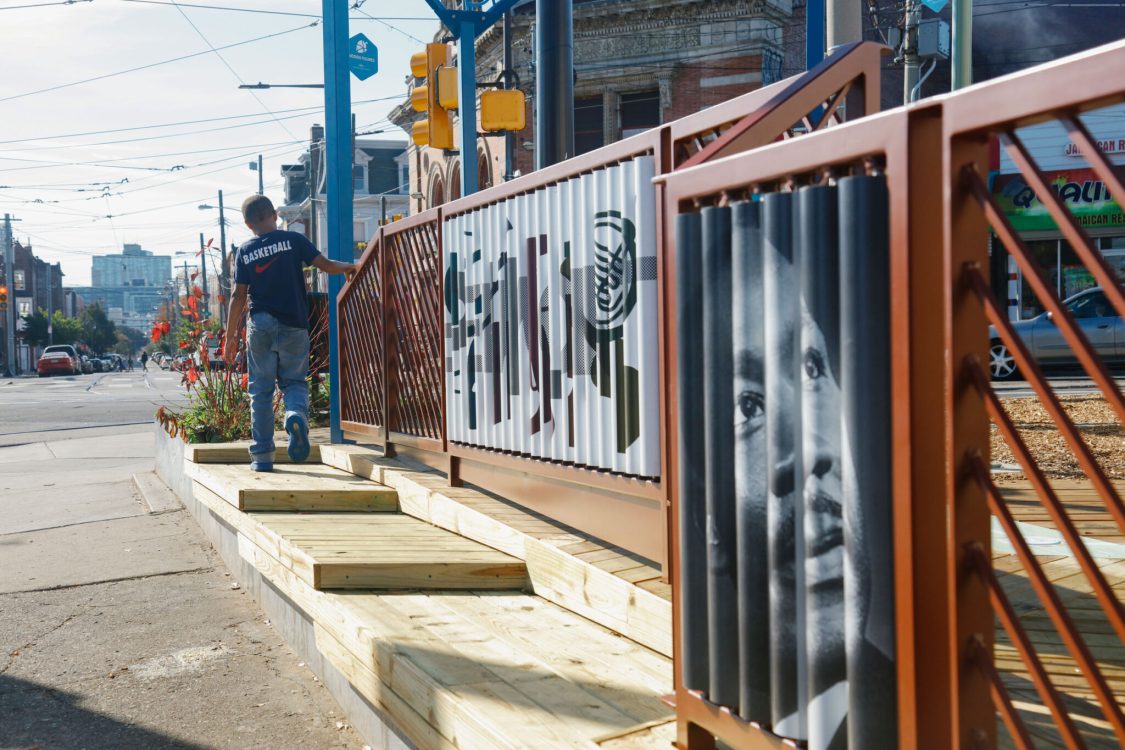
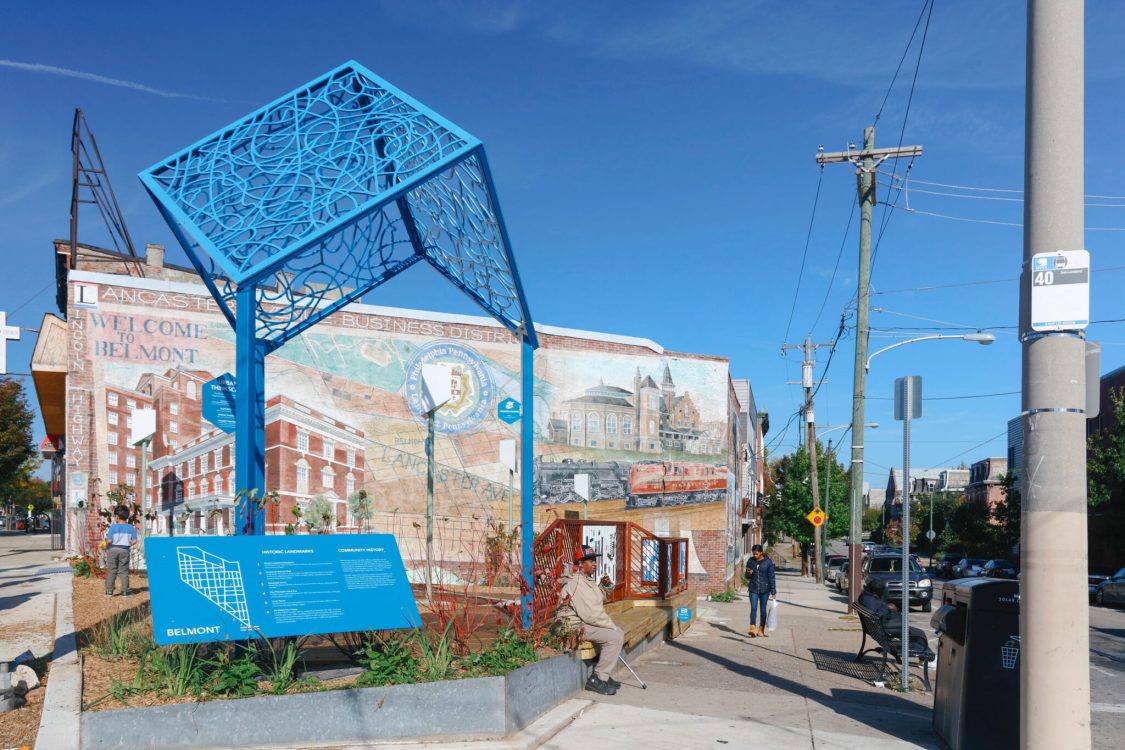
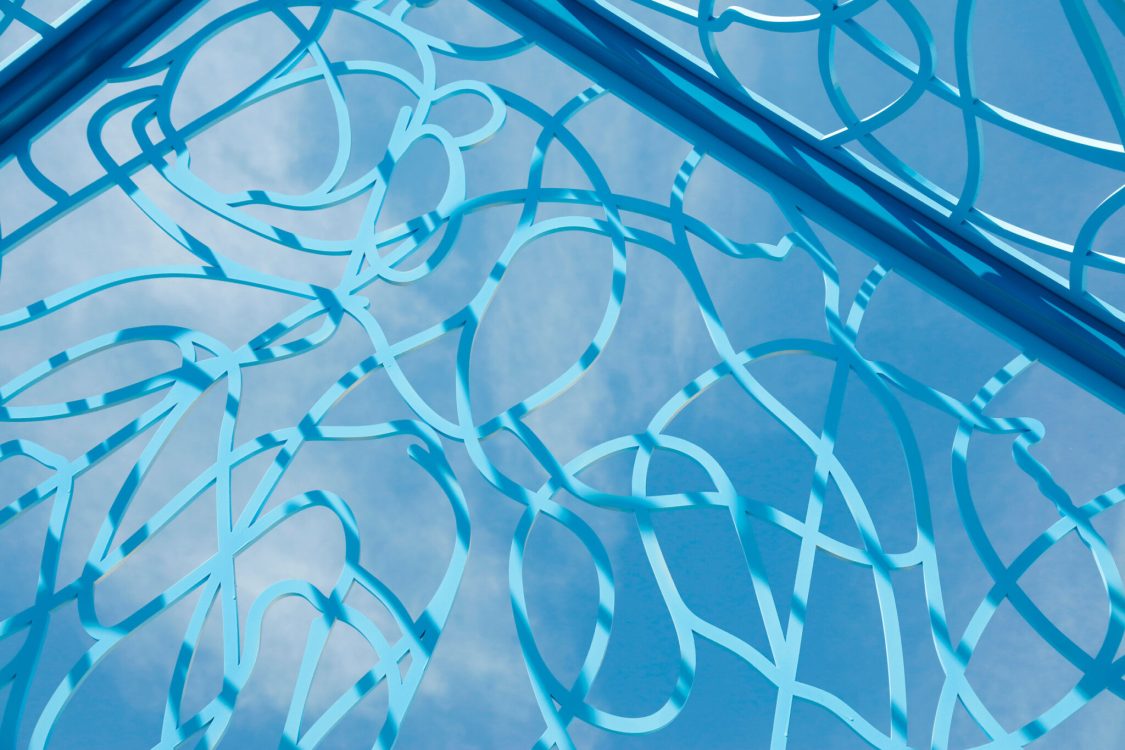
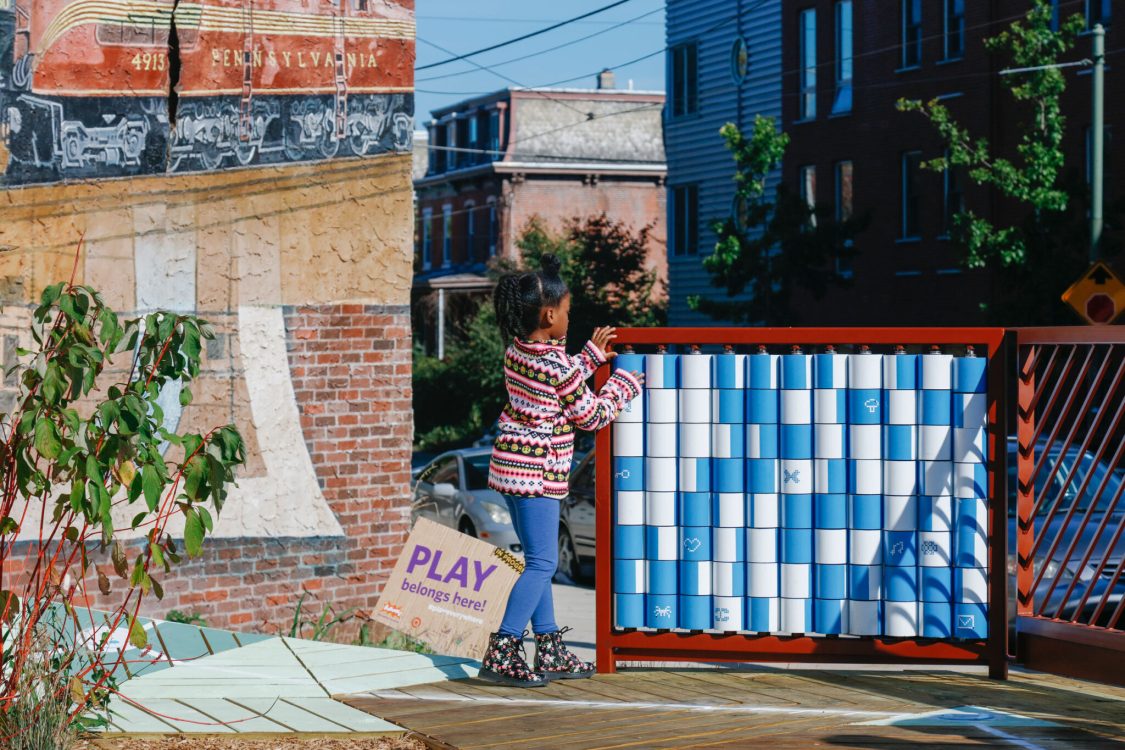
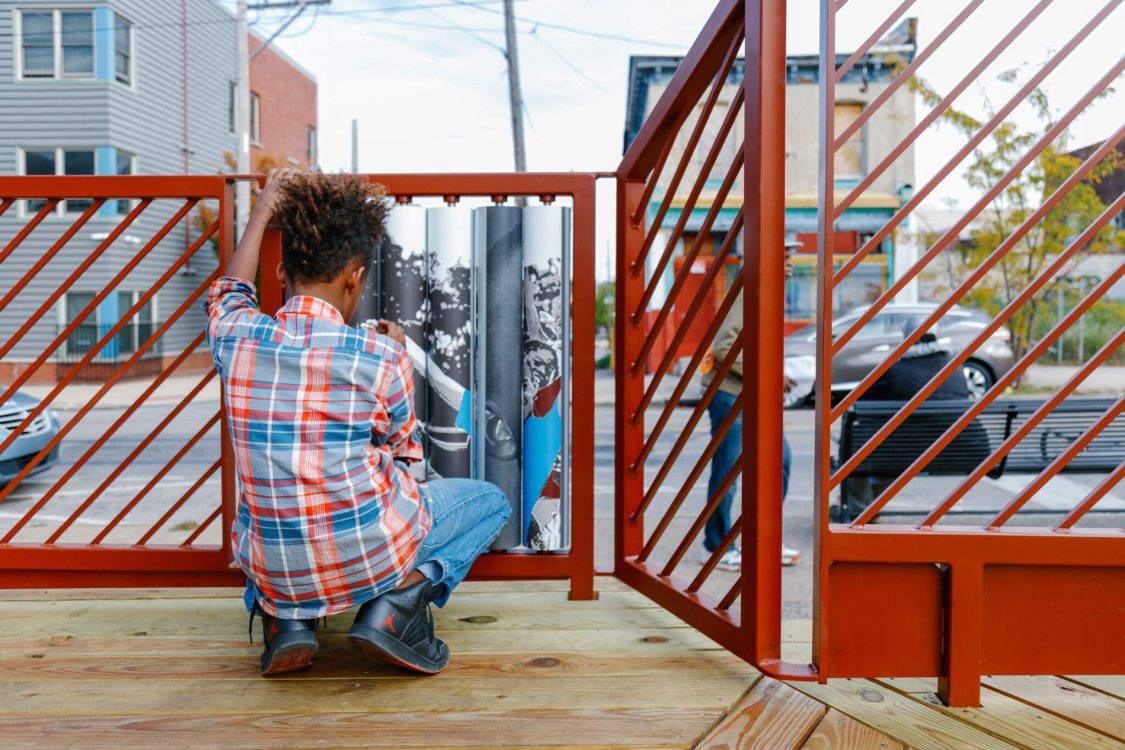
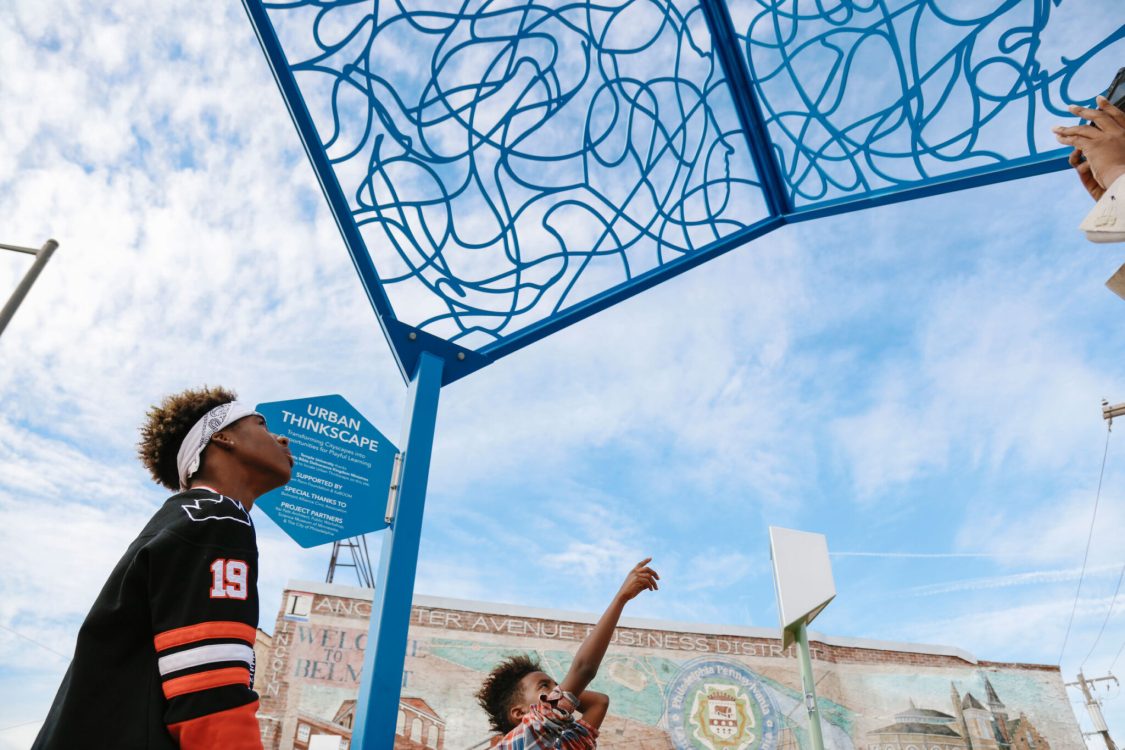
Designer/s
Client
Urban Thinkscape brings the benefits of playful learning, which combines the enjoyable nature of play with a learning goal, to a community, public setting of a bus stop. Benches now include puzzles with movable parts that stimulate spatial skills and become opportunities for exploring language, color, and numbers while on-site signage and this website connect families to additional information and resources about the links between play and learning.
Instead of viewing streets and bus stops merely as conduits from point A to B, Urban Thinkscape creates connections between these shared everyday spaces and the people who occupy them. Urban Thinkscape meets individuals and families where they live by embedding playful learning into the activities of daily life.
Urban Thinkscape encourages playful interactions between children and caregivers that feature Content in and math, science, and literacy, as well as Collaboration and Communication with peers, adults, and family members.
Project team
Shared intention emerges out of a cross-sector dialogue and collective imagination.
The Urban Thinkscape team engaged local residents, including parents, children, and community leaders, were invited to share their aspirations for their neighborhood. These discussions guided the themes, design, and placement of the installations, ensuring the spaces reflected shared values and needs.
Stakeholders and a multidisciplinary team are involved in ideation and design decisions.
Urban Thinkscape’s co-design process actively involved stakeholders from the local community to ensure that the installations were not only effective educational tools but also meaningful and relevant to the communities they served.
Initial designs and prototypes were presented to the community with activities that guided decision-making on the themes and content of each installation. Feedback from these sessions informed adjustments to the installations, ensuring they met educational, aesthetic, and experiential expectations.
Developmental psychologists provided insights into how to integrate the principles of playful learning into designs, designers and fabricators ensured physical feasibility and safety, and community organisations pre-planned feasibility for engaging the community in co-creation.
Building processes involve local knowledge and craftsmanship, and include the participation of the community.
The project’s design and build team involved Public Workshop, a local organization that promotes ‘citizen-led design improvements’. Through their program that trains and engages youth in design-build projects, they collaborated with the Urban Thinkscape team to co-create large parts of the project throughout the installation period and during community-engagement events.
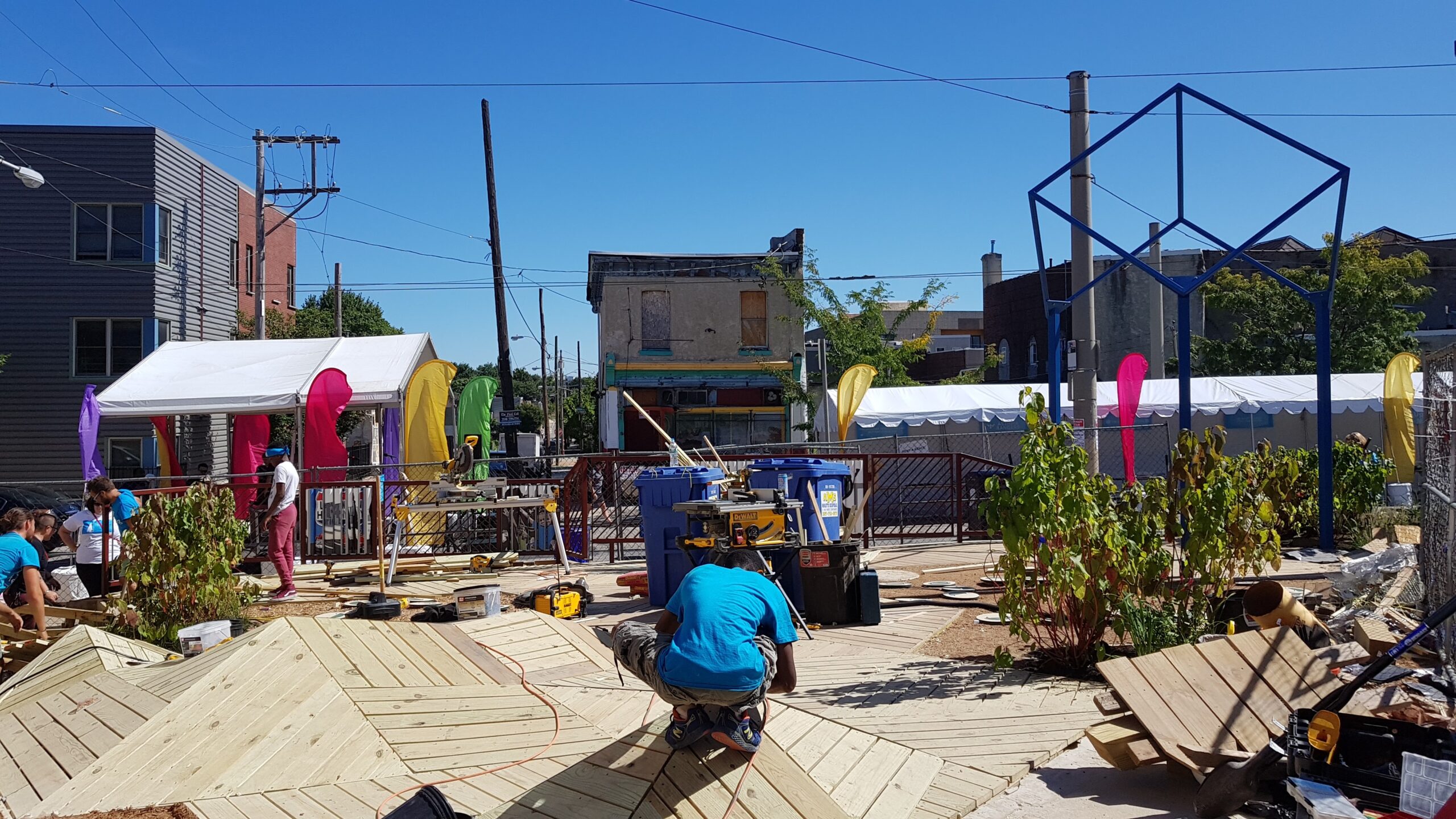
People-Place relationships emerge from shared stewardship and transparent management.
Urban Thinkscape worked with the Belmont Alliance Civic Association Community Development Association represented at the time by Bettye Ferguson, who led planning efforts to keep the site maintained by the local community.
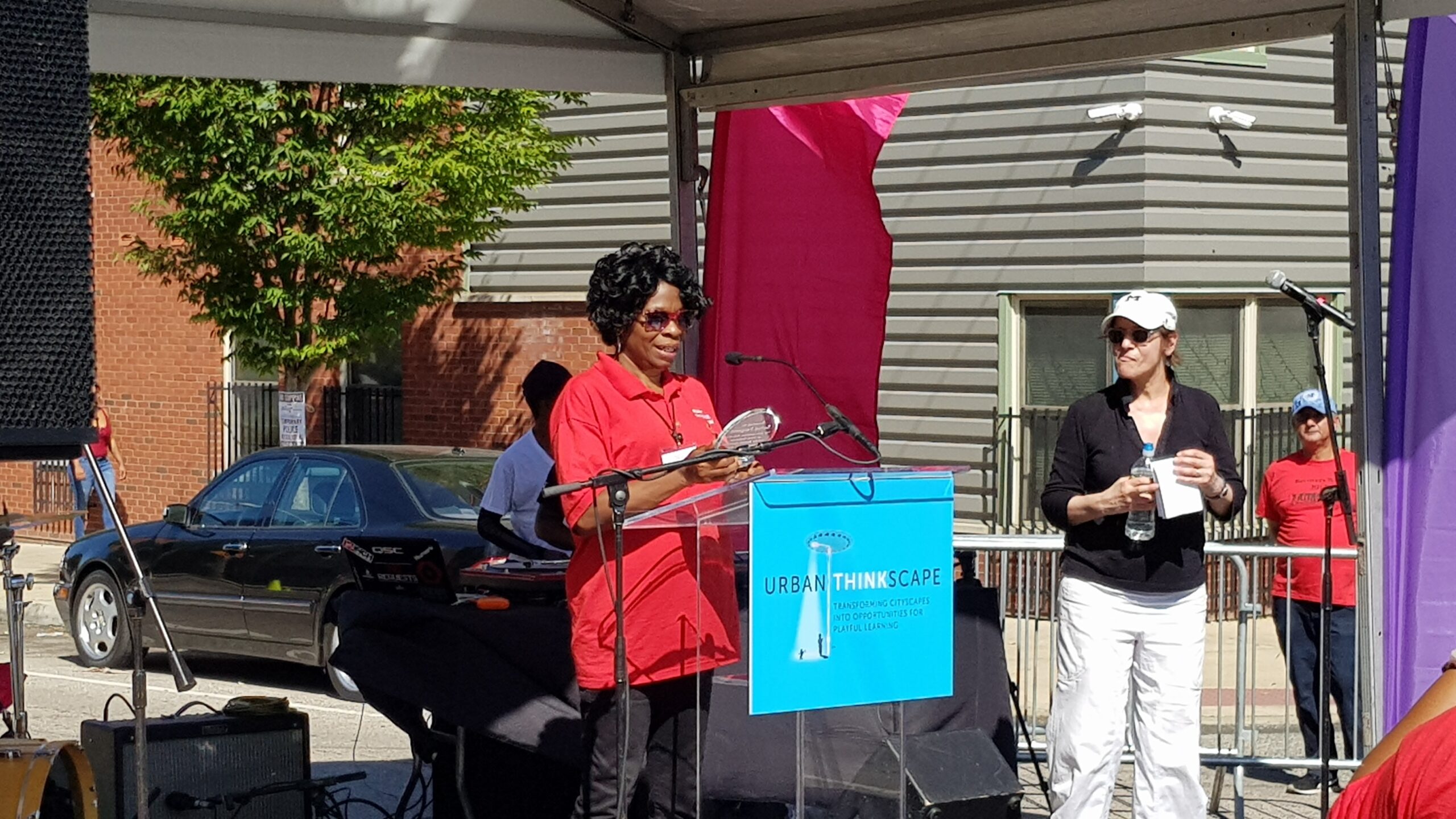
Research of the social and ecological settings frame project goals.
The premise for Urban Thinkscape at the site was rooted in research into the local community benefitting from opportunities for healthy child development. By embedding these opportunities in public spaces, the project harnesses time spent outside of school to encourage engagement that develops crucial skills.
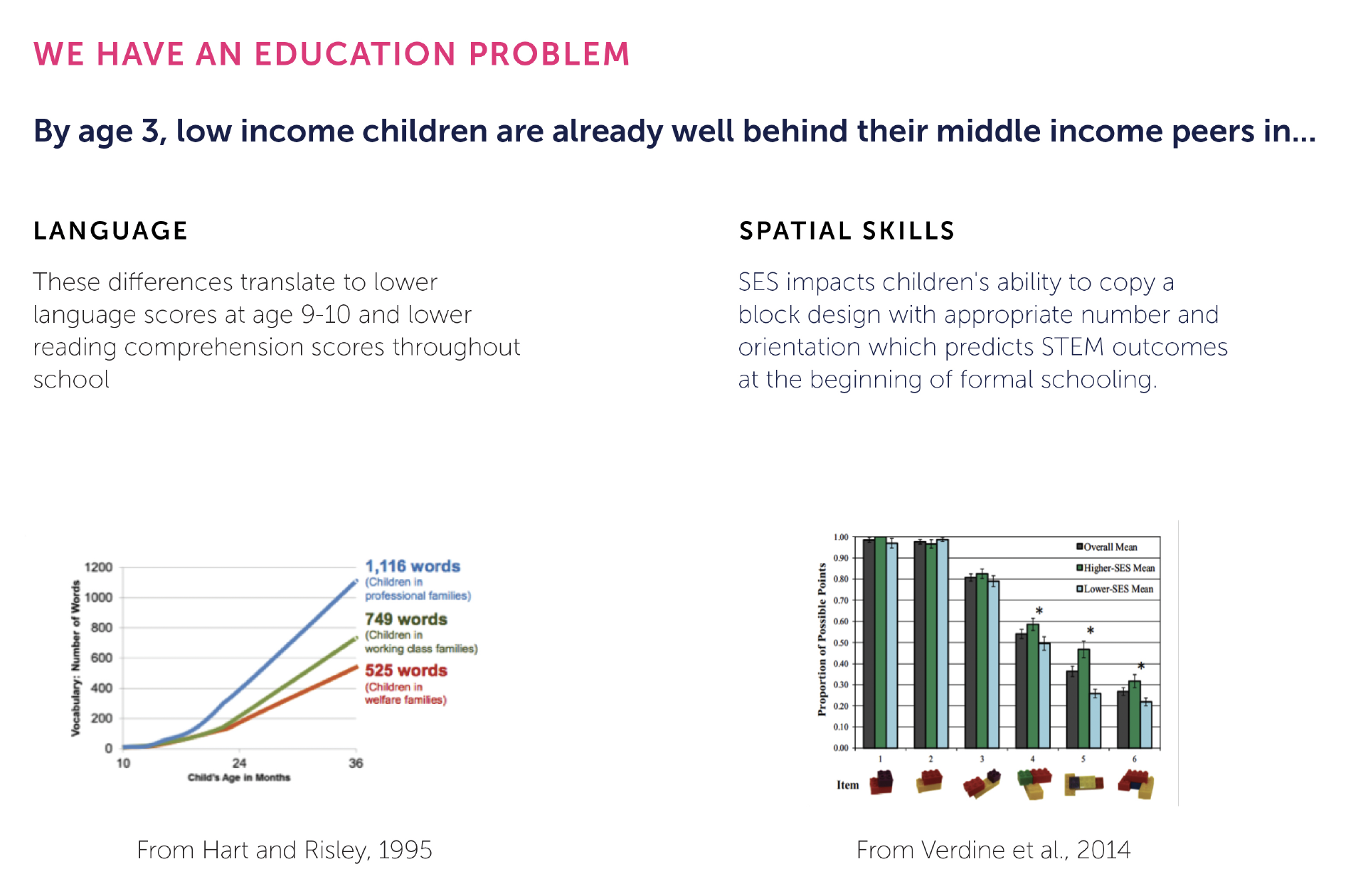
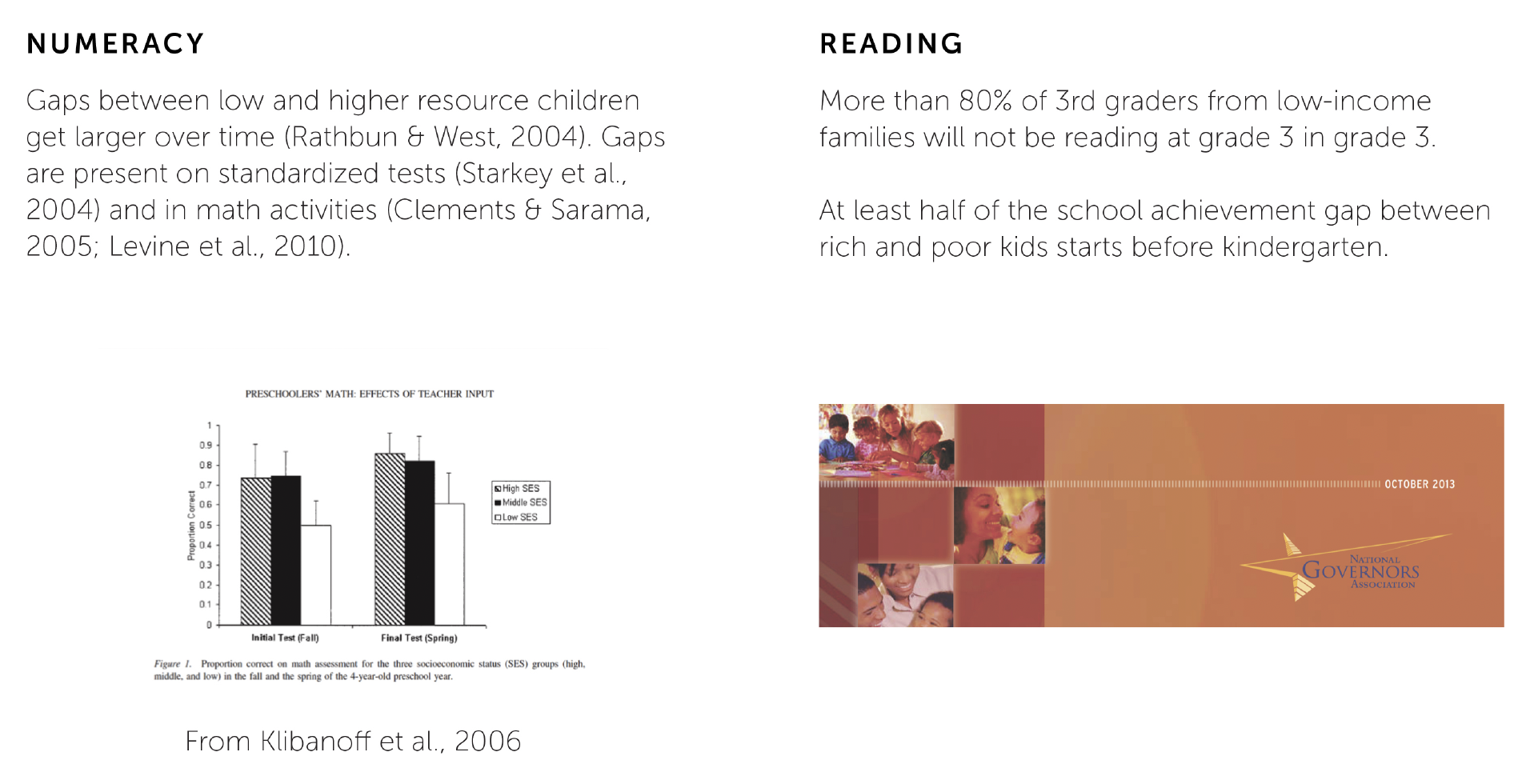
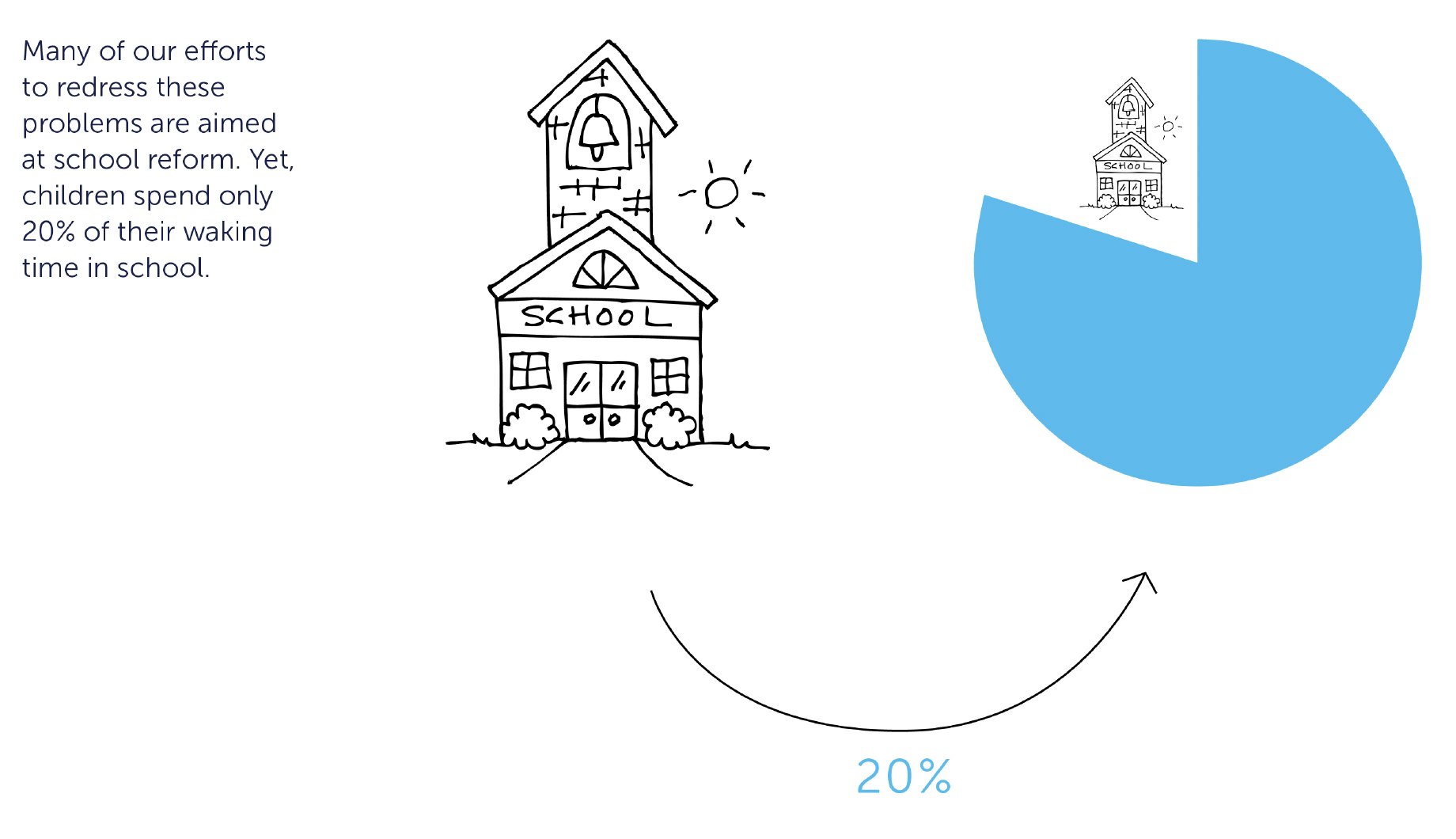
Design decisions are informed by scientific insight.
Urban Thinkscape leveraged science-informed design to translate the principles of playful learning into physical, interactive installations. The project was deeply rooted in the research of developmental psychologists, notably Dr. Kathy Hirsh-Pasek, Dr. Roberta Gollinkoff and their colleagues, who have extensively studied how children learn best through guided play.
Their research emphasizes the importance of fostering critical thinking, problem-solving, collaboration, and creativity in informal learning environments. These principles were translated by architect Itai Palti at Hume, embedding specific learning goals into four different installations.
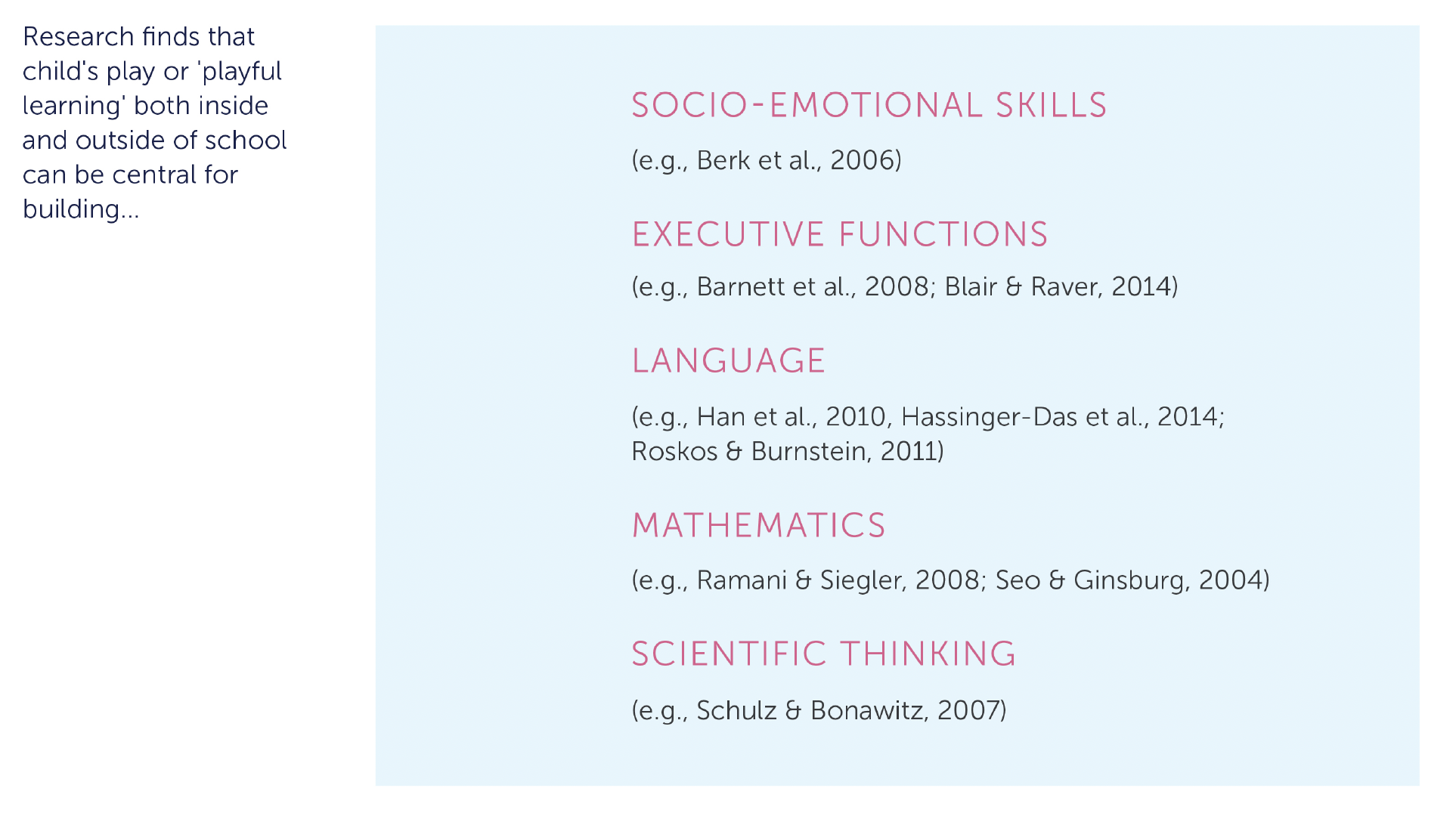
Building processes, material sourcing, and planned use are sustainable and regenerative.
Impact is observed, measured and analysed to generate insights.
Urban Thinkscape collaborated with Temple University’s Infant and Child Laboratory to engage local residents as Community Data Ambassadors, integral to assessing the project’s impact. This initiative involved training community members in research methodologies to collect observational data before and after the installation of Urban Thinkscape. Their involvement ensured culturally sensitive data collection and fostered community ownership of the project. The data gathered by these ambassadors revealed a 25% increase in adult-child interactions and a 34% rise in curriculum-related language use post-installation, highlighting the project’s success in enhancing family engagement and learning opportunities in public spaces. Read more about this in this paper:
A number of papers and reports have been published on the impact of Urban Thinkscape:
Project goals are periodically reconsidered, affirmed, or reimagined.
Environments are a result of design iterations responding to feedback.
Environments possess inherent adaptability to accommodate people-driven changes.
Environments are reactive to the People-Place Dialogue, setting into motion cycles of evolution.